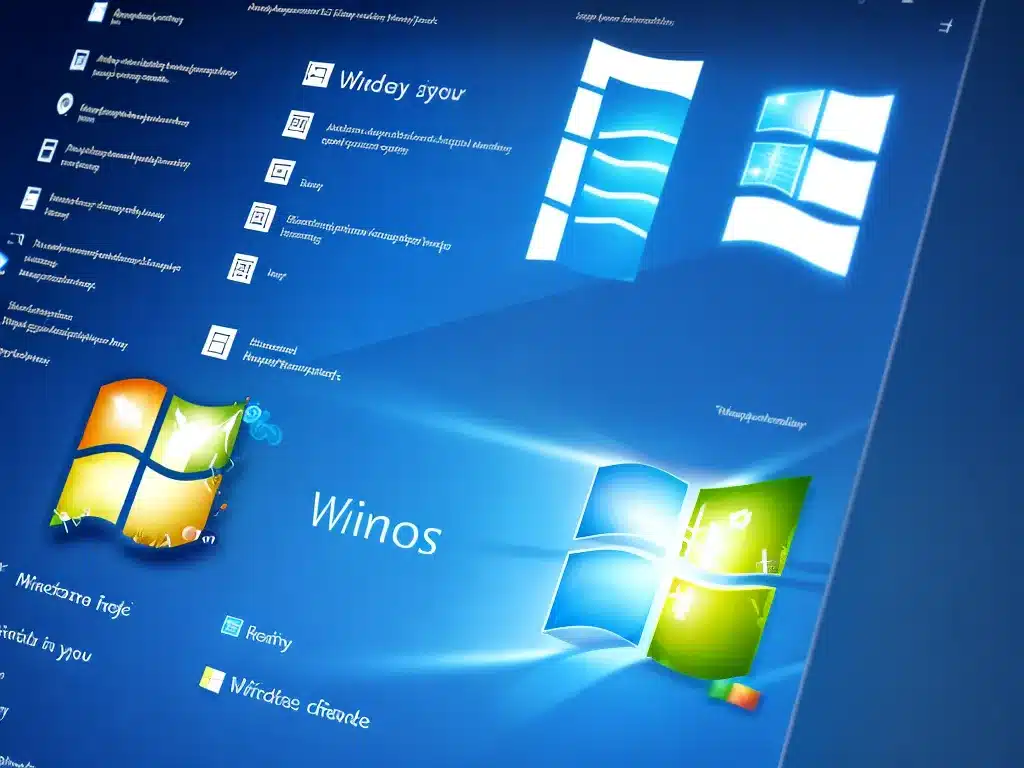Windows Security Features You Should Be Using
As a Windows user, keeping your device and data secure should be a top priority. Windows comes with several built-in security features that can help protect you against malware, hackers, and other online threats. In this article, I will discuss some of the most important Windows security features you should be utilizing.
Use a Firewall
A firewall acts as a barrier between your device and the internet, monitoring incoming and outgoing network traffic. Windows comes with its own firewall called Windows Defender Firewall.
Here are a few reasons why using Windows Defender Firewall is important:
-
It provides a basic level of protection against malicious attacks and intrusions by blocking dangerous incoming traffic.
-
It prevents unauthorized access to your system from the outside world.
-
You can configure it to allow or block specific apps and features from accessing the internet.
-
It’s easy to enable and included with Windows – no need for a third party firewall.
To enable Windows Defender Firewall:
- Go to Start and search for “Windows Defender Firewall”.
- Click on “Turn Windows Defender Firewall on or off”.
- Switch the setting to “On” for both private and public networks.
I recommend leaving the firewall enabled at all times for maximum security. You can customize the settings further to suit your needs.
Use Antivirus Software
Antivirus software is crucial for guarding against dangerous malware like viruses, spyware, ransomware, and more. Windows Defender Antivirus comes pre-installed on Windows 10 and provides real-time scanning and protection.
Here are some key reasons to use Windows Defender Antivirus:
- It constantly monitors for threats and suspicious activity.
- It scans files, apps, downloads, and networks for malware.
- It has excellent detection rates according to independent testing.
- It’s already included with Windows – no need to purchase additional software.
- You can schedule regular quick, full, and custom scans.
Make sure to update Windows Defender Antivirus regularly and run scans to check for malware. For extra protection, you can use it alongside third party antivirus software as well.
Turn On Windows Defender
Related to the previous two points, one of the easiest ways to boost your Windows security is to enable Windows Defender. This is an umbrella term for Microsoft’s suite of built-in antivirus, firewall, and other security tools.
To enable the full Windows Defender suite:
- Go to Start and search for “Windows Security”.
- Click on the Windows Security app.
- Under Virus & threat protection, switch “Real-time protection” and “Cloud-delivered protection” to On.
With Windows Defender enabled, you’ll have a robust multi-layered security shield protecting your device around the clock. Make sure to keep it up to date.
Use Strong Passwords
One of the simplest yet most vital security measures you should take is using strong passwords. Weak passwords are easy for hackers to guess and crack.
Follow these tips for creating secure passwords:
- Use at least 12 characters – the longer the better.
- Include a mix of uppercase, lowercase, numbers and symbols.
- Avoid personal info, common words, or consecutive keyboard patterns.
- Don’t reuse the same passwords across multiple sites.
- Use a password manager like Dashlane to generate and store unique passwords.
Enabling multi-factor authentication (MFA) also adds an extra layer of account security on top of passwords.
Keep Your Software Updated
Maintaining an up-to-date Windows device is key for security. Software vendors regularly release security patches to fix vulnerabilities and bugs in their programs.
Here are some tips for staying on top of security updates:
- Enable automatic updates in Windows Update settings. This ensures you get the latest patches.
- Periodically check for Windows updates manually as well – don’t just rely on automatic updates.
- Update your browsers, apps, drivers, and other programs frequently.
- Remove outdated software you no longer use to minimize vulnerabilities.
- Always install the latest firmware and BIOS updates from your device manufacturer.
Keeping software updated seals up security holes and prevents criminals from exploiting known weaknesses.
Use Secure Connections
When browsing the web, always use secure HTTPS connections whenever possible. HTTP websites are not encrypted and allow hackers to intercept data.
Here are some ways to stay secure:
- Bookmark HTTPS sites and use those over HTTP. Many sites support HTTPS now.
- Use a VPN (virtual private network) when on public Wi-Fi to encrypt all traffic.
- Avoid HTTP sites when entering sensitive info like passwords or credit cards.
- Check for padlock icon in the browser which indicates a secure connection.
Sticking to HTTPS websites ensures your browsing activity and information remains private.
Conclusion
Implementing robust security is crucial for protecting your Windows PC. Leverage Windows’ built-in tools like the firewall, Defender, and automatic updates. Practice good password hygiene, be wary of suspicious links and files, and think before you click. Combining smart security habits with the protection of Windows can help keep your system locked down tight against the latest threats. Stay vigilant and keep your device up-to-date for the best defense.













